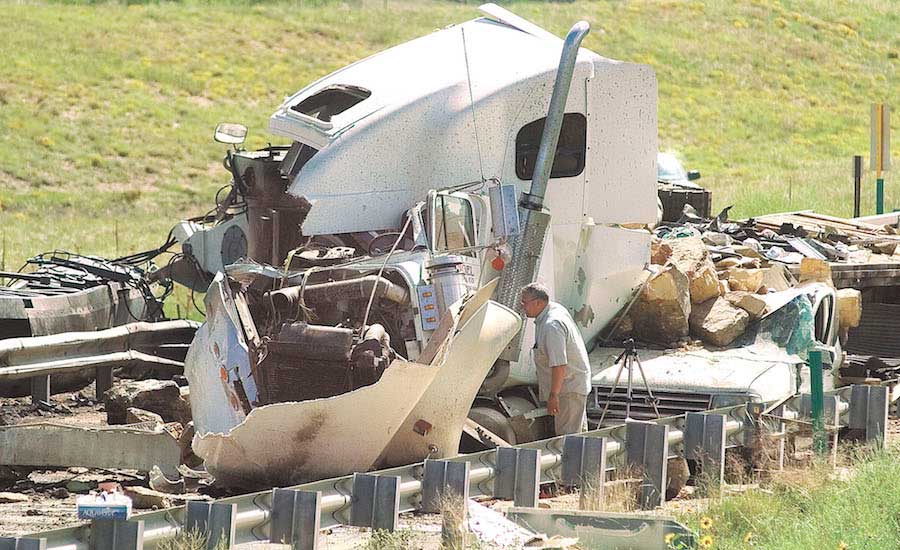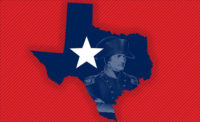Does Texas deserve to be known for having the most deadly work zone accidents in the U.S.?
When it came to capital spending on transportation in 2014, Texas and New York states were about $1.5 billion apart: Texas spent $5.789 billion on and New York spent $4.031 billion, according to data compiled by the National Association of State Budget Officers. That's not an exact measure of all road construction, but it's one way to keep things in perspective.
Only three out of every 100 work zone fatalities involves a construction or maintenance worker. But that makes it no less puzzling that 144 Texas drivers and passengers died in work zone accidents in 2014 while New York recorded only four such fatalities.
California and Florida had the next most work zone fatalities in 2014, with 64 and 60, respectively.
Work zones, by their nature, combine many elements that flummux drivers moving at high speed. In a length of road where work is being conducted, light levels vary, lane lines shift and road shoulders pinch inward. Unless Jersey barriers are liberally deployed, small lapses in attention can send cars headlong into equipment and workers.
Drivers involved in Texas work zone crashes were not more likely than their counterparts in New York to be unlicensed, operating unsafe cars or beset by foul weather.
Over the past 15 years, a combination of work-zone risk-management initiatives has helped to reduce the number of fatalities in the U.S. to 669 people in 2014 from 1,026 in 2000, according to data posted on the website WorkZoneSafety.org. The methods include planning, signage, traffic control, speed-limit enforcement and driver education. While work zone safety has improved markedly, the number of deadly crashes has risen gradually over the past six years, according to the Fatal Accident Reporting System maintained by the National Highway Traffic Safety Administration.
Also over the years, the statistical picture of the crashes has come into clearer focus. Younger and older drivers tend to speed more than middle-aged motorists, a recent study of Minnesota drivers has shown. And other studies have demonstrated that heavy trucks are involved in about a third of all work-zone fatalities.
Do the federal statistics tell a story about more drinking or drug use among Texas drivers involved in work zone crashes? Only modestly more, according to federal data. Carinsurancecomparison.com, using federal data, rates Texas as the among worst states when it comes to drunk driving in recent years and among the worst overall for driver behavior.
What about speeding? Maybe. Texas drivers also take to the road unwatched by radar-speed camera detection and enforcement systems: State law prevents such camera systems from use in Texas and 13 other states.
 |
| Source: FARS |
Drugs and alcohol without doubt kill many motorists driving in work zones. Across the country, 22.2% of drivers were considered to be in a state of drug intoxication in fatal workzone crashes for which drug involvement was reported. In Texas, 42.9% of drivers whose drug involvement was reported were drug-intoxicated. Almost half of drivers whose alcohol involvement was reported were alcohol-intoxicated.
But figuring out exactly how much alcohol was a major factor in fatal crashes is a challenge. The information is inconsistently reported and such testing in Texas was much spottier than the national average. Because of these reporting inconsistencies, the NHTSA actually uses a statistical estimate in its reports to approximate how likely it was that a driver in a fatal crash was sober or intoxicated.
In Texas and in the country in general in 2014, a little less than one-third of fatal work zone crashes involved a speeding vehicle. Fewer than one out of every five crashes involved a distracted driver. Drivers involved in Texas work zone crashes were not more likely than their counterparts in New York to be unlicensed, operating unsafe cars, or beset by foul weather.
Regional differences in driving and safety habits could be another factor. From 2010 to 2012, the South (including Texas) experienced slightly more than half of all the U.S. work zone accidents in the U.S that involved worker fatalities, according to a recently released review of federal data conducted for the Associated General Contractors. But normalized for employment, the Midwest had a disproportionate share of such accidents. Again, these fatalities involved workers, not drivers and passengers.
With no clear answer, ENR talked to the transportation departments in both states. New York sees the most pressing issue as aggressive, reckless driving, speeding, and verbal and sometimes physical abuse directed toward flaggers and workers. Distracted driving is also big problem, says the New York State Dept. of Transportation.
In Texas, state officials trumpet the message to drivers that vehicle occupants, not workers, are actually the victims of most work zone crashes in Texas. "We emphasize," the department said in answers to emailed questions, that "drivers must slow down, put down their phones, not tailgate and pay attention while driving in work zones."
And here's one more reason why Texas may not be as bad as its 2014 work zone figures show. Texas is like many other states in that it has long miles of highway through rural areas where driving fast on long rides lulls drives into complacency. And then suddenly Texas drivers arrive in congested and dense urban areas where a lot of road work is under way. Anyway, that's one way of looking at it.
Wyoming, Mississippi, Montana, New Mexico and North Dakota, by various measures assessed on the website 24/7WallStreet, are the five most dangerous states to drive in. The factors considered include deaths per 100,000 miles driven, frequency with which seat belts are used and deaths on rural roads. Texas is the 16th most dangerous, according to 24/7Wall Street.
Using different factors, including the condition of bridges, the website carinsurancecomparison.com named Louisiana, Arizona, South Carolina, Pennsylvania and West Virginia as the states with the most dangerous highways. Texas, while consistently ranking among the worst on that website for overall driver safety, was not in the top 10 of states most dangerous for driving.





